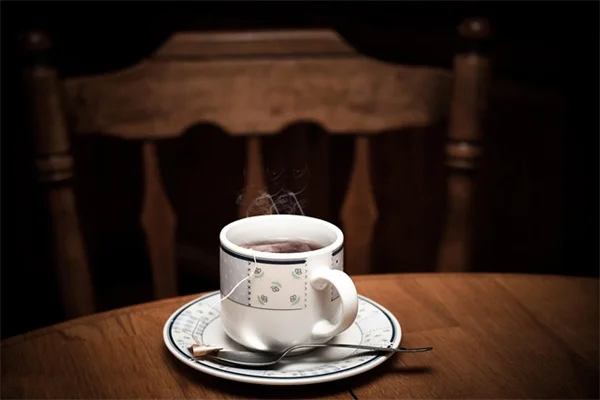Can You Steam Clean Hardwood Floors? Discover the Truth & Tips for Success!
Can you steam clean hardwood floors? The answer is: yes, you can steam clean hardwood floors, but with caution! 🔍 While steam cleaning can effectively eliminate germs and allergens, it’s essential to understand the unique needs of your hardwood flooring. If you're like me and want to keep your floors looking pristine, knowing when and how to steam clean is crucial. In this article, I’ll guide you through the ins and outs of steam cleaning hardwood floors, helping you make informed decisions while keeping your investment safe. Let’s dive into the details and discover whether steam cleaning is the right choice for you and your beautiful hardwood floors!
E.g. :How to Clean Your Epoxy Garage Floor: 7 Essential Tips for a Sparkling Finish
- 1、Is Steam Cleaning Safe for Your Hardwood Floors? Let's Break It Down 🔍
- 2、Choosing the Right Hardwood for Steam Cleaning 🏆
- 3、Steam Cleaning Like a Pro: Step-by-Step Guide 🧼
- 4、When to Put the Steam Mop Away 🛑
- 5、Maintaining Your Hardwood's Beauty Long-Term 🌟
- 6、Final Thoughts: Finding Your Cleaning Rhythm 🎵
- 7、FAQs
Is Steam Cleaning Safe for Your Hardwood Floors? Let's Break It Down 🔍
The Steam Cleaning Debate: Friend or Foe to Hardwood?
Picture this: you're staring at your gorgeous hardwood floors wondering if that shiny new steam cleaner will be their best friend or worst enemy. The truth is, steam cleaning hardwood floors is like giving them a spa day - amazing when done right, but disastrous if overdone. I've seen too many homeowners accidentally turn their oak floors into abstract art with excessive steam! The key lies in understanding your floor's personality - its finish, age, and temperament.
Did you know most manufacturers void warranties for steam damage? That's right - your $5,000 flooring investment could lose protection with one wrong steam session. But before you swear off steam entirely, let me share a secret: engineered hardwood and pre-finished floors often handle steam better than their solid wood cousins. It's all about knowing what you're working with!
Steam Cleaning Benefits That Might Surprise You ✨
Kills germs without chemicals: In today's health-conscious world, steam cleaning offers a powerful advantage - it eliminates 99.9% of bacteria using just water! My neighbor's toddler has allergies, and switching to steam reduced her symptoms dramatically. The heat penetrates deep into wood grain, zapping allergens that regular mopping misses.
Here's a quick comparison of cleaning methods:
| Method | Germ Removal | Moisture Risk | Cost |
|---|---|---|---|
| Steam Cleaning | Excellent | High | $$ |
| Damp Mopping | Good | Medium | $ |
| Dry Sweeping | Poor | None | $ |
But wait - is steam cleaning really necessary for every home? Not necessarily! Unless you've got pets, kids, or frequent guests, traditional methods might serve you better. I learned this the hard way after steaming my pristine floors weekly - they developed hazy spots within months!
Choosing the Right Hardwood for Steam Cleaning 🏆
 Photos provided by pixabay
Photos provided by pixabay
Engineered Hardwood: The Steam Cleaning Champion
If you're dead set on steam cleaning, engineered hardwood is your MVP. Its layered construction acts like armor against moisture - the plywood base laughs in the face of steam while the real wood veneer stays gorgeous. My cousin installed engineered floors before her twins started crawling, and three years later they still look brand new despite weekly steam cleanings!
Pro tip: Always check the manufacturer's specs. Some engineered floors can handle steam at 200°F, while others max out at 150°F. Exceeding these temperatures is like microwaving your grandmother's fine china - just don't do it!
The Truth About Solid Hardwood and Steam
Here's where things get tricky. Traditional solid hardwood and steam have a love-hate relationship. That beautiful single-plank construction? It absorbs moisture like a sponge. I'll never forget when my best friend steamed her antique oak floors - the boards swelled so much they looked like a topographic map!
But if you've got properly sealed solid hardwood, all hope isn't lost. The magic words are "polyurethane finish" - this creates a protective barrier that can withstand occasional steam treatments. Just remember:
- Never steam unfinished floors
- Always use the lowest steam setting
- Keep the mop moving constantly
Steam Cleaning Like a Pro: Step-by-Step Guide 🧼
Pre-Cleaning Prep Work (Don't Skip This!)
Before you even think about turning on your steam mop, there's homework to do. First, grab a flashlight and inspect your floors at an angle - any worn spots or cracks? These are danger zones where steam can sneak in and cause damage. I learned this lesson after steaming what looked like perfect floors, only to discover later that the previous owner's dog had scratched through the finish in corners.
Next, do the "tape test": Press clear tape onto different areas of your floor. If residue sticks to the tape, your finish is compromised and steam is a no-go. This simple trick saved me from ruining my dining room floors last year!
 Photos provided by pixabay
Photos provided by pixabay
Engineered Hardwood: The Steam Cleaning Champion
Now for the fun part! Here's my battle-tested routine:
- Set your steam cleaner to the appropriate temperature (check manufacturer guidelines)
- Use distilled water to prevent mineral buildup
- Work in 3x3 foot sections, moving continuously
- Immediately wipe with a dry microfiber cloth
Remember that time I mentioned about moving constantly? There's science behind it - steam needs about 15 seconds of contact to sanitize, but more than 30 seconds risks damage. I use a kitchen timer to keep myself honest!
When to Put the Steam Mop Away 🛑
Alternative Cleaning Methods That Work Wonders
Sometimes the best cleaning solution is the simplest one. For daily maintenance, nothing beats a good microfiber dust mop. I'm obsessed with the O-Cedar model that traps dust instead of spreading it around - my allergies have never been happier!
For deeper cleans, try this DIY solution my grandmother swore by:
- 1 gallon warm water
- 1/4 cup white vinegar
- 2 drops dish soap
Mix in a bucket, wring your mop until it's barely damp, and voila! The vinegar cuts grease while the soap lifts dirt, all without harsh chemicals. Just avoid using this on waxed floors - vinegar and wax mix about as well as cats and bath time.
Signs You Should Call a Professional
How do you know when your floors need expert attention? Watch for these red flags:
- Cupping (edges higher than centers)
- White hazy spots
- Squeaky or loose boards
Last winter, I ignored the early signs of moisture damage and ended up needing $2,000 in repairs. Learn from my mistake - if your floors start looking or sounding different after cleaning, call a pro immediately!
Maintaining Your Hardwood's Beauty Long-Term 🌟
 Photos provided by pixabay
Photos provided by pixabay
Engineered Hardwood: The Steam Cleaning Champion
The secret to minimizing deep cleans? Prevention! Here's what works in my home:
- Place high-quality mats at every entrance
- Trim pets' nails regularly
- Use felt pads under furniture
- Implement a "no shoes" policy
You wouldn't believe how much dirt my entryway rug catches - about a tablespoon per person per day! That's less grime making its way to my floors, meaning I can go longer between steam sessions.
The Refinishing Conversation
Every 7-10 years, even well-maintained floors need refinishing. But how do you know when it's time? Run this simple test: Sprinkle water on your floor. If it beads up, your finish is strong. If it soaks in within 3-5 minutes, start shopping for refinishers!
Refinishing isn't just about looks - it's about protection. A fresh coat of polyurethane can mean the difference between a floor that lasts decades and one that needs replacing. My floors just got refinished last month, and the difference is night and day - they're practically glowing!
Final Thoughts: Finding Your Cleaning Rhythm 🎵
Creating a Personalized Cleaning Schedule
Here's the cleaning schedule that works for my busy household:
- Daily: Quick sweep with electrostatic duster
- Weekly: Damp mop with vinegar solution
- Monthly: Steam clean (engineered floors only)
- Quarterly: Professional deep clean
Your schedule might look different based on foot traffic, pets, and climate. The key is consistency - sporadic deep cleaning actually causes more wear than regular maintenance!
Investing in Quality Tools
After trying countless cleaning tools, these are my holy grail items:
- Bona Hardwood Floor Mop System
- Shark Genius Steam Pocket Mop
- Oreck Commercial Orbiter
- Swiffer 360° Dusters
Good tools make cleaning easier and more effective. I used to hate mopping until I got my Bona system - now it's almost therapeutic! Remember, quality tools last longer and protect your floors better in the long run.
When it comes to the question of can you steam clean hardwood floors, the answer isn't a simple yes or no. We've explored the ins and outs of steam cleaning, from its benefits in eliminating germs without harsh chemicals to the risks it poses to certain types of hardwood. If you're considering adding steam cleaning to your maintenance routine, remember to always check the manufacturer's guidelines and understand the characteristics of your specific flooring. I can’t stress enough how important it is to keep an eye on your floors' condition before diving into steam cleaning. If you take the right precautions, you can enjoy the benefits without damaging your beautiful hardwood. So, why not give it a shot? You might just find that steam cleaning works wonders for your floors while keeping them healthy and stunning!
Additionally, if you're hesitant about steam cleaning, think about incorporating other cleaning methods that suit your lifestyle. I’ve found that a combination of damp mopping and occasional steam cleaning keeps my floors looking fabulous. Don't forget to share your cleaning experiences or ask questions in the comments! Let's keep this conversation going, and together, we can figure out the best ways to care for our hardwood floors. 🌟
E.g. :Are steam mops okay to use on hardwood? : r/HomeImprovement
FAQs
Is steam cleaning safe for all types of hardwood floors?
Not all hardwood floors are created equal when it comes to steam cleaning. While engineered hardwood is usually more resilient and can handle steam better, traditional solid hardwood can absorb moisture, leading to potential damage. If you have solid hardwood, make sure it has a protective polyurethane finish before considering steam cleaning. It's essential to check the manufacturer's guidelines to ensure you're not voiding any warranties!
How can steam cleaning benefit my hardwood floors?
Steam cleaning can be a game-changer for your hardwood floors! It eliminates 99.9% of bacteria using just water, which is fantastic for creating a healthier home environment. If you have pets or kids, this method is especially beneficial as it reaches deep into the wood grain, removing allergens that regular mopping might miss. Just remember to use it wisely to avoid any moisture damage!
What precautions should I take before steam cleaning?
Before you grab that steam cleaner, it's crucial to do some prep work. First, inspect your floors for any wear or damage that could worsen with steam exposure. I recommend doing the "tape test" to check if your finish is compromised. If residue sticks to the tape, then steam cleaning is a no-go. Taking these steps helps prevent costly mistakes and keeps your floors looking their best!
How often should I steam clean my hardwood floors?
The frequency of steam cleaning depends on your household's lifestyle. If you have pets, kids, or a lot of foot traffic, you might want to steam clean once a month. However, for most homes, every few months is sufficient. I learned the hard way that over-steaming can lead to hazy spots on your floors, so a balanced cleaning schedule is key to maintaining their beauty!
When should I consider professional cleaning services?
If you notice any signs of damage like cupping, hazy spots, or squeaky boards, it's time to call in the professionals. I ignored early signs of moisture damage last winter, which cost me $2,000 in repairs. Don’t wait for the problem to escalate; if your floors seem off after cleaning, getting a pro involved can save you a lot of trouble in the long run!


